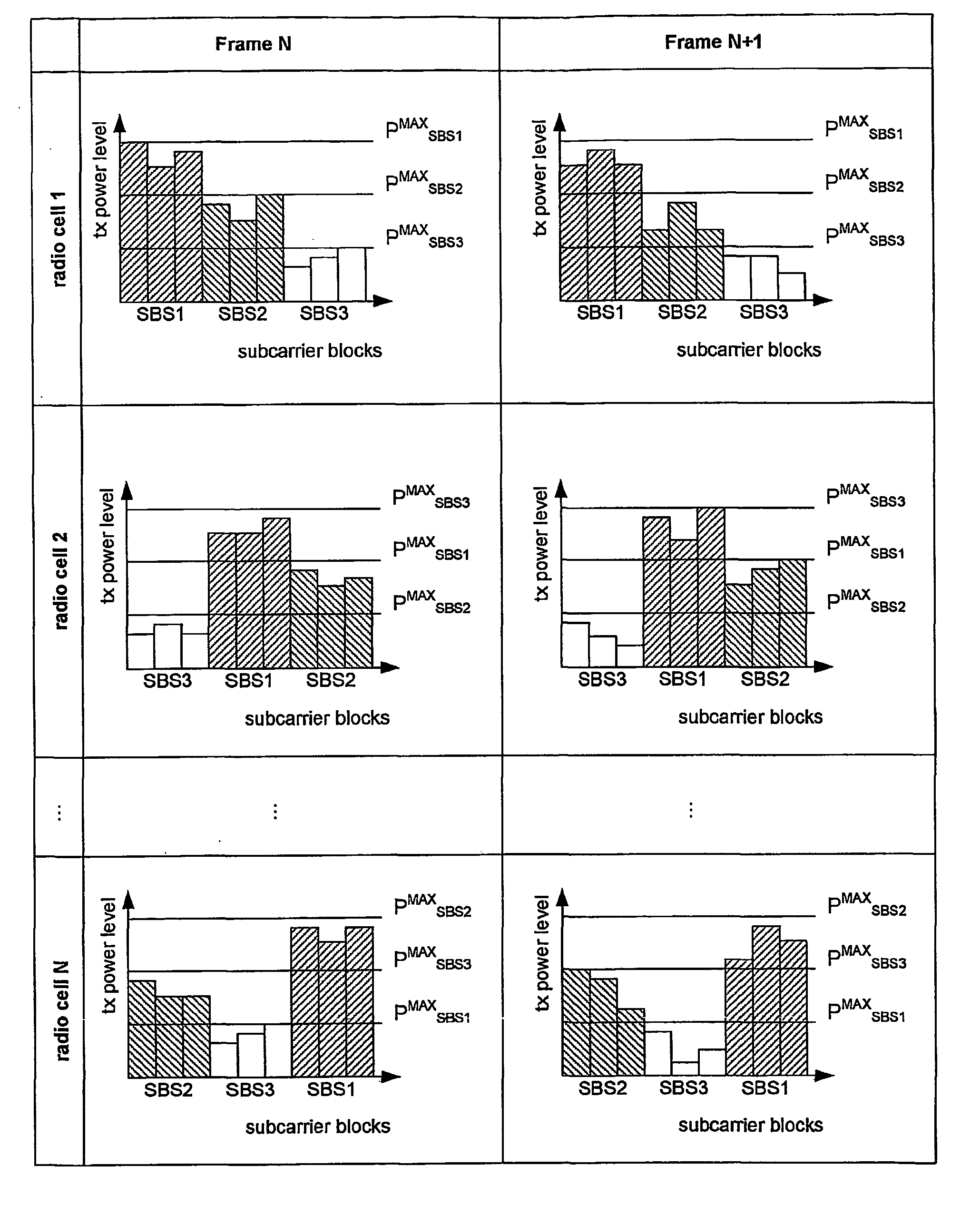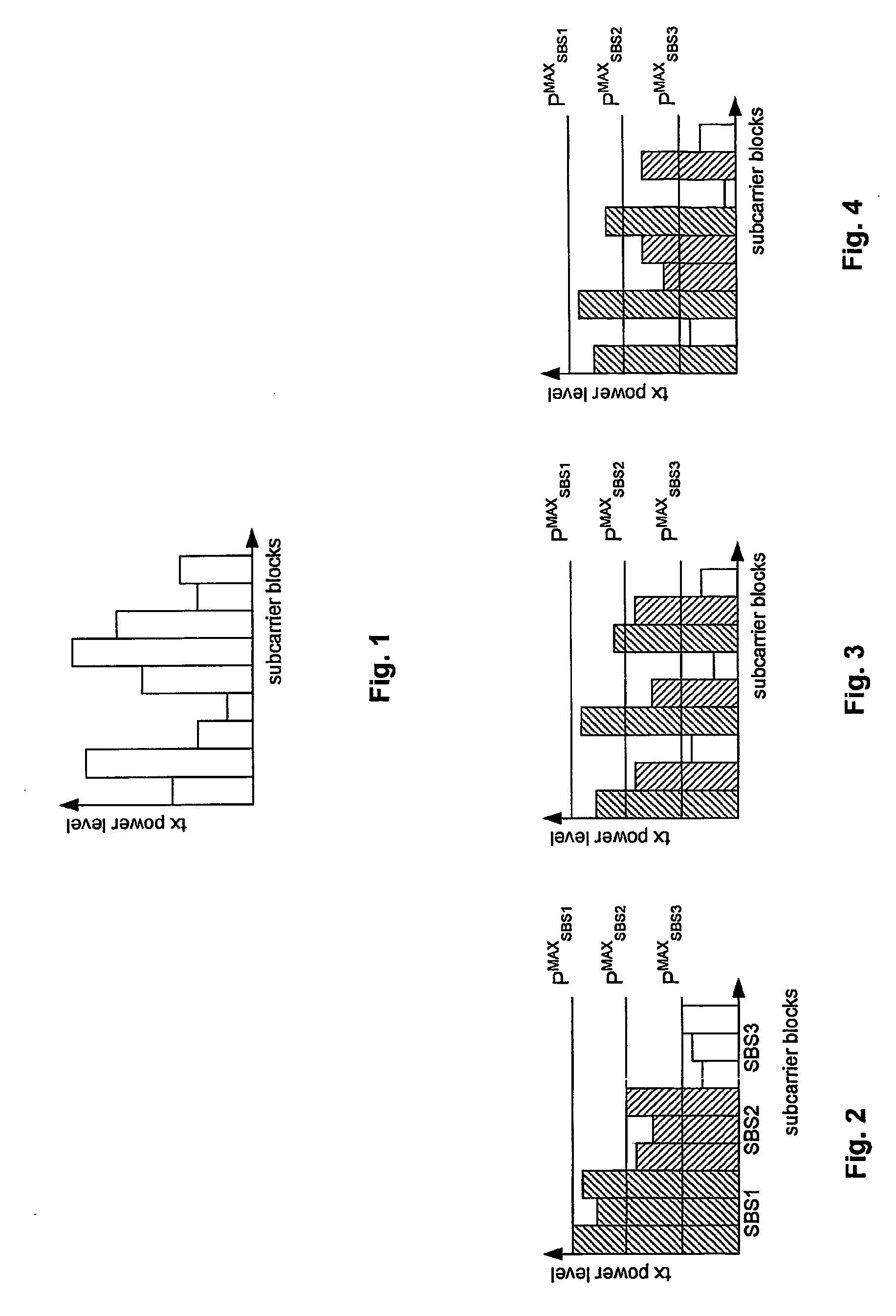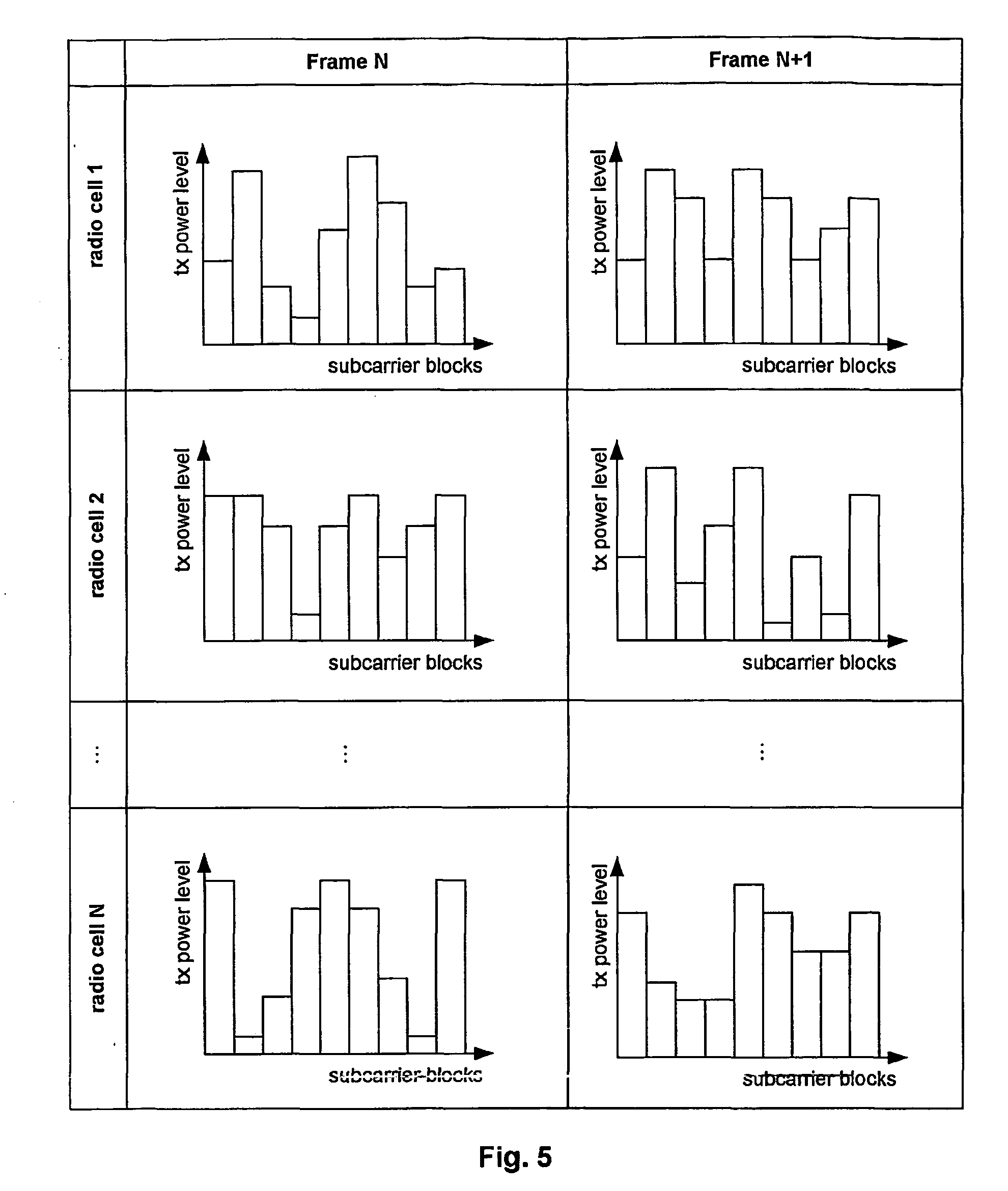Transmission power range setting during channel assignment for interference balancing in a cellular wireless communication system
- Summary
- Abstract
- Description
- Claims
- Application Information
AI Technical Summary
Benefits of technology
Problems solved by technology
Method used
Image
Examples
Embodiment Construction
[0094] In the following the present invention will be described with regard to wireless communication system using OFDM. Though the examples relate to OFDM, it should be noted that the ideas underlying the present invention may be readily applied to other FDM based communication systems as well.
[0095] According to an embodiment of the present invention the OFDM subcarrier blocks may be divided into N subcarrier block-sets (SBS). FIG. 1 shows the distribution of transmission power for subcarrier blocks according to a prior art system. FIGS. 2, 3 and 4 show three examples for the distribution of power limits (or ranges) with different SBS definitions according to different embodiments of the present invention. The assignment of the power limits may be performed in accordance with the SBS power limits in adjacent cells in order to control the SIR levels depending on the SBS as e.g. shown in FIGS. 8, 9 and 10.
[0096] Compared to prior art, this power-limit definition has the advantage ...
PUM
 Login to View More
Login to View More Abstract
Description
Claims
Application Information
 Login to View More
Login to View More - R&D
- Intellectual Property
- Life Sciences
- Materials
- Tech Scout
- Unparalleled Data Quality
- Higher Quality Content
- 60% Fewer Hallucinations
Browse by: Latest US Patents, China's latest patents, Technical Efficacy Thesaurus, Application Domain, Technology Topic, Popular Technical Reports.
© 2025 PatSnap. All rights reserved.Legal|Privacy policy|Modern Slavery Act Transparency Statement|Sitemap|About US| Contact US: help@patsnap.com



